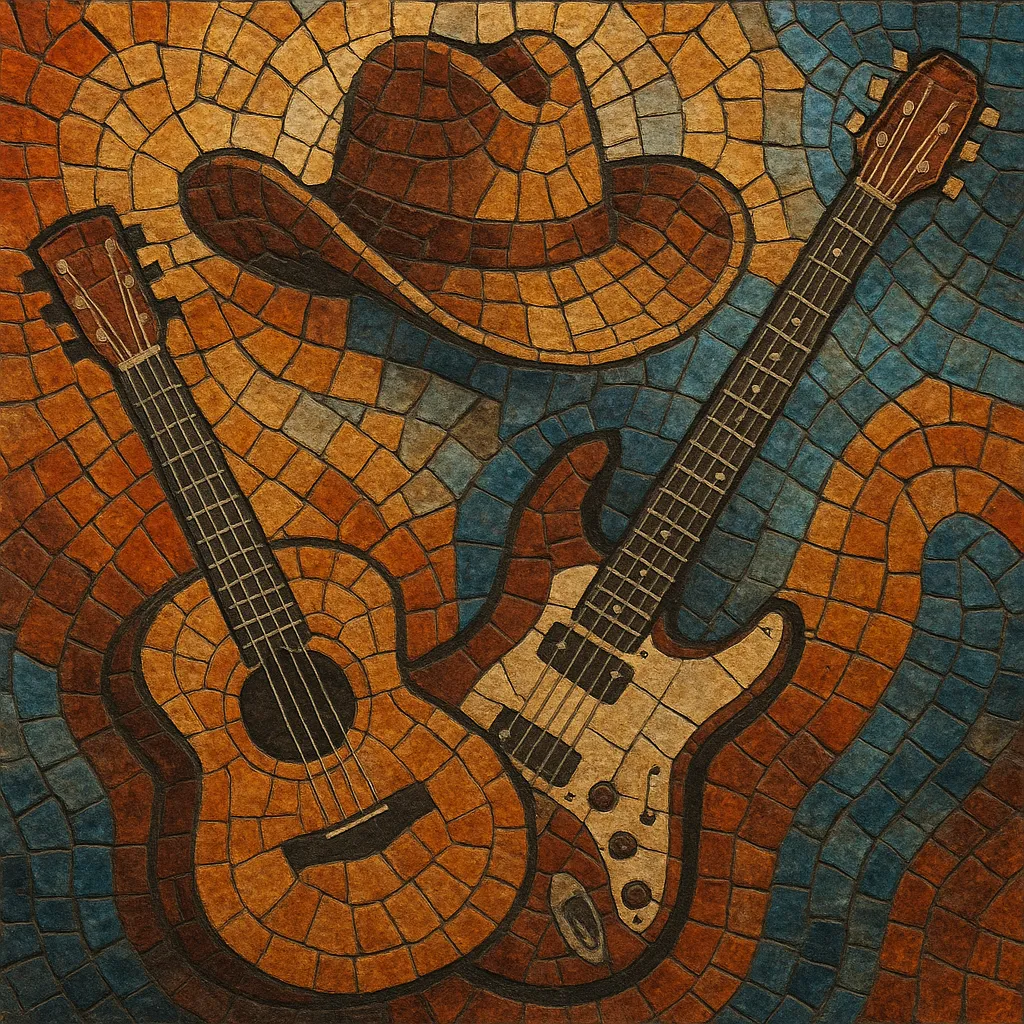
Country rock is a hybrid of country music’s storytelling, twang, and acoustic textures with rock’s backbeat, amplification, and song structures.
It typically features electric and acoustic guitars, pedal steel, close vocal harmonies, and a steady 4/4 groove, while lyrics focus on roads, small towns, heartbreak, and everyday American life.
The sound ranges from jangly and rootsy to polished and radio-friendly, bridging bar-band energy with country elegance and shaping the template for later Americana and heartland styles.
Country rock coalesced in the United States when rock musicians began embracing country instrumentation and themes. Pivotal catalysts included The Byrds’ pivot on “Sweetheart of the Rodeo” (1968), Bob Dylan’s Nashville recordings (especially “John Wesley Harding” and “Nashville Skyline”), and Gram Parsons’ vision joining The Byrds and forming The Flying Burrito Brothers. These projects fused pedal steel, two-step rhythms, and narrative lyrics with rock songcraft and backbeat.
The 1970s saw country rock enter the mainstream. The Eagles refined the style with smoother harmonies and radio-ready production, while Poco, Linda Ronstadt, and the Nitty Gritty Dirt Band broadened its appeal. Neil Young and The Band showcased more rugged, roots-forward variants, anchoring the genre in authenticity and regional storytelling. This decade established the commercial and aesthetic blueprint for the style on FM radio.
As production trends shifted, country rock branched into related currents. Heartland rock carried its blue-collar narratives to stadiums; soft rock absorbed its harmonies; and the rise of Americana reframed country rock as part of a broader roots ecosystem. Artists and scenes (from Los Angeles to Nashville) kept the pedal steel and storytelling at the core, even as arrangements became slicker or more alternative.
Country rock’s synthesis of twang and backbeat influenced southern rock, alt-country, jangle-oriented guitar pop, and modern Americana. Its songwriting focus—plainspoken, place-based, and emotionally direct—remains a template for contemporary roots and mainstream crossovers alike.
Use a blend of rock and country tools: electric and acoustic guitars (Telecaster and 12‑string jangle are common), pedal steel (or lap steel), bass, drum kit, and optionally piano, Hammond organ, mandolin, or banjo. Keep guitar tones clean-to-lightly overdriven, leaving space for the pedal steel’s sustained lines.
Favor a steady 4/4 backbeat at medium tempos (80–120 BPM). Common grooves include the train beat, shuffles, and two-step feels. Keep drumming supportive and unfussy; use tasteful fills and emphasize pocket over flash.
Write in major keys with I–IV–V, ii–V, and IV–V turnarounds. Borrow country colors through Mixolydian flavors, secondary dominants, and occasional modal interchange (bVII or IVmaj7). Melodies should be singable and direct; incorporate close vocal harmonies (3rds/6ths) in choruses.
Tell grounded stories about travel, work, home, love, and loss. Use vivid but plainspoken imagery and concrete details (roads, towns, seasons). Aim for emotional clarity over metaphorical density.
Use verse–chorus–bridge structures with short instrumental breaks (guitar or pedal steel). Pan rhythm guitars for width, place pedal steel as a melodic counter-voice, and keep vocals upfront. Opt for warm, natural production—minimal compression, room mics on drums, and subtle slapback or plate reverb on vocals and guitars.

